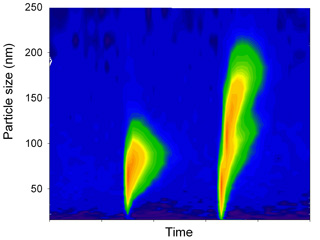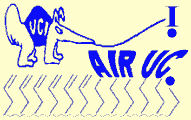Indoor Air Chemistry of Ozone
In spite of serious concerns about ozone-generating air purifiers raised by scientists, consumer unions, and government officials, the general public continues to use these devices in homes, offices, and schools. The main goal of our indoor air chemistry project is to educate the public on the health dangers of indoor ozone and particulate matter and on proper strategies for indoor air purification. A number of measurements including our own [45] in actual offices and residential areas convincingly demonstrated that ionization and ozonolysis air purifiers can produce levels of ozone in indoor environments well in excess of health-based standards. For example, an ozone-generating ionic air purifier can build up ozone levels to above the EPA NAAQS standards in a small room after an hour of use. An ozone generator sold to an unsuspecting public under the guise of an air purifier violates not only the EPA NAAQS but also the much higher OSHA STEL level in a normal-size room, within minutes of operation.
 Furthermore, a substantial amount or ultrafine particles can be generated by such ozone-generating air “purifiers” as a result of chemical reactions between the emitted ozone and volatile organics in the room [49]. The particle number concentration increases occur as sudden bursts reflecting the inherent complexity of the underlying chemistry (an example is shown in the figure). Inspired by late Dr. James N. Pitts Jr, aprofessor Emeritus at the University of California, Riverside, we investigated ultrafine "particle explosion" events in indoor environments resulting from reactions of ozone, emitted by ozone-generating air purifiers, with terpenoid organic molecules from air-freshening devices. Furthermore, a substantial amount or ultrafine particles can be generated by such ozone-generating air “purifiers” as a result of chemical reactions between the emitted ozone and volatile organics in the room [49]. The particle number concentration increases occur as sudden bursts reflecting the inherent complexity of the underlying chemistry (an example is shown in the figure). Inspired by late Dr. James N. Pitts Jr, aprofessor Emeritus at the University of California, Riverside, we investigated ultrafine "particle explosion" events in indoor environments resulting from reactions of ozone, emitted by ozone-generating air purifiers, with terpenoid organic molecules from air-freshening devices.
Our publications in this area generated very strong interest from the media worldwide (newspapers, radio, and television), from the California Air Resources Board, and from a number of private persons. They helped approve a California Assembly Bill 2276 (2006), which authorized the California Air Resources Board to develop a regulation to limit the ozone emissions from indoor air cleaning devices. These regulations, which prohibit sales of powerful ozone generators to the general public, are now in effect in California.
In an effort to better educate the public, we created a laboratory module [54] aimed at characterizing the performance of air purifiers designed for rooms, refrigerators, cars, and personal use. The laboratory protocol relies on standard aerosol particle counting techniques to measure the clean air delivery rate (CADR) and UV photometry to quantify the ozone emission rate for air purifiers. The students analyze their measurements and discuss the implications for indoor air quality and ozone chemistry. The laboratory is suitable for students with a wide range of education and laboratory experience. This lab was first developed for the AirUCI teacher training program, and a more complicated version of this lab was offered in the physical chemistry laboratory course. |


